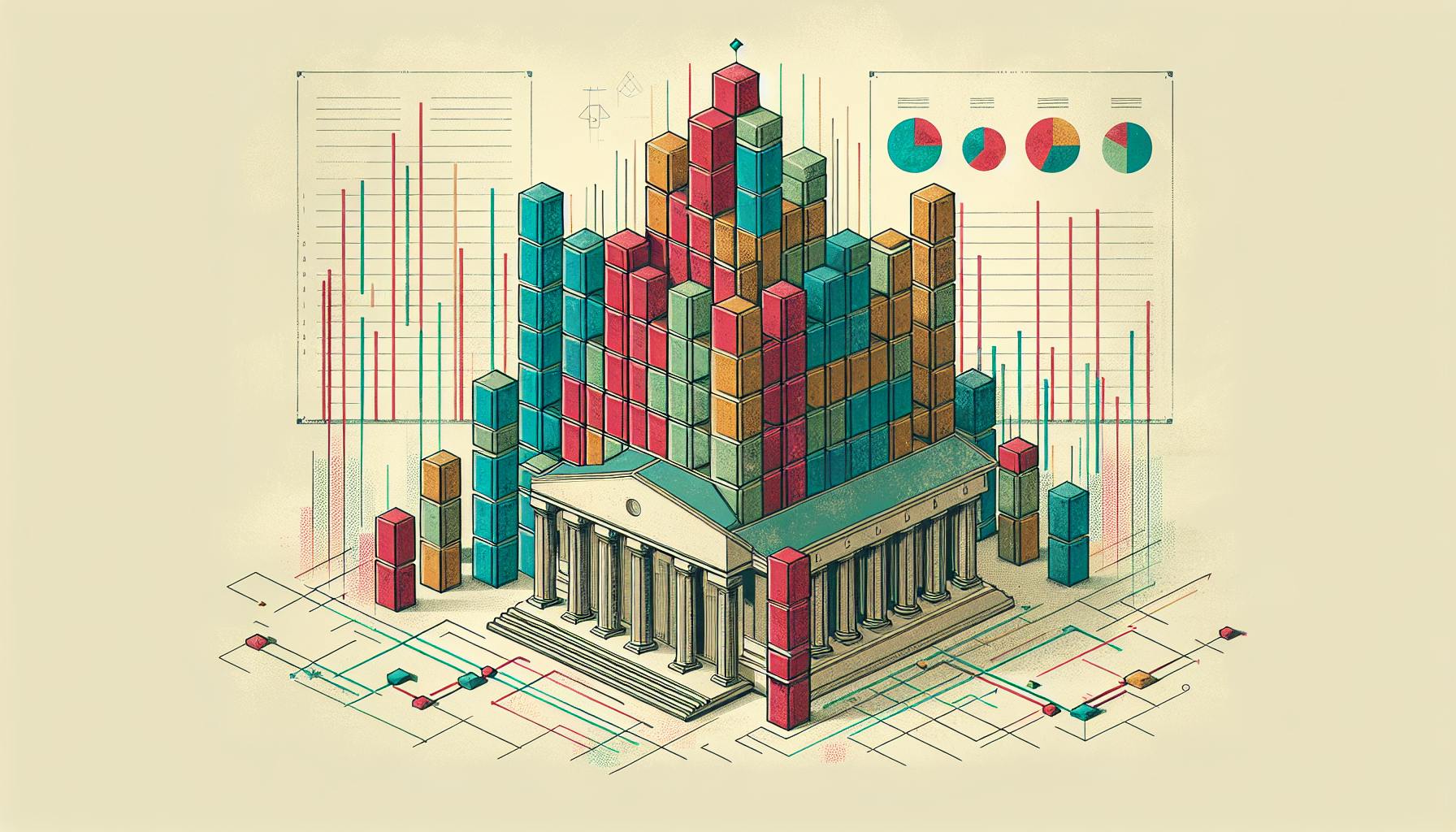Creating and managing budgets is a complex process. It's challenging to accurately predict revenues and expenses.
Using variance analysis, you can pinpoint the root causes of budget overruns and shortfalls. This allows you to make informed decisions to get budgets back on track.
In this post, you'll learn the budget variance formula to compare actual financial results to budgets. We'll cover dollar and percentage variance calculations, analyze causes of variances, and explore tools to visualize insights.Following these best practices will lead to improved forecasting and decision-making.
Introduction to Budget Variances and the Budgeting Process
Understanding Budget Variances in Accounting
A budget variance measures the difference between a company's budgeted, or planned, costs and actual costs for a specific period. It provides important insights into why actual results differed from what was budgeted.
There are two main types of budget variances:
- Favorable variance - Actual amount is less than budgeted amount
- Unfavorable variance - Actual amount exceeds the budgeted amount
Budget variances are calculated by subtracting actual costs from budgeted costs. The formula is:
Budget variance = Budgeted amount - Actual amount
A positive number indicates a favorable variance where actual costs were less than planned. A negative number is an unfavorable variance showing costs were higher than expected.
The Role of Budget Variances in Decision-Making
Analyzing budget variances is a key aspect of financial planning and analysis. It helps managers:
- Evaluate performance by comparing actual results to plans
- Identify issues requiring corrective action
- Improve future budgeting and forecasting
- Make informed decisions regarding operations and spending
For example, an unfavorable materials usage variance could indicate supplier problems or the need for better production controls. This analysis guides decisions on changing suppliers or improving processes.
Carefully tracking and managing variances creates accountability and enables data-driven responses to business challenges. This leads to better operational efficiency.
Incorporating Variances into the Budgeting Process
Budget variances provide valuable inputs for improving future budget cycles. Common ways variances are used include:
- Updating revenue and cost assumptions
- Adjusting production levels and inventory targets
- Identifying risk areas to enhance contingency plans
- Allocating resources to priority areas
- Setting achievable targets based on past performance
Building variance analysis into budgeting and planning processes leads to more accurate forecasts that fuel better decision making. This enables organizations to meet goals and quickly respond to changing market conditions.
How do you explain budget variances?
A budget variance measures the difference between a company's actual financial performance and its planned budget. It provides important insights into why budgets may have been missed or exceeded.
There are a few key reasons budget variances can occur:
-
Revenue shortfalls - If actual sales or revenues come in lower than budgeted, this will lead to an unfavorable revenue variance. Reasons could include economic factors, increased competition, supply shortages, or issues with customer conversion rates.
-
Cost overruns - If actual costs are higher than budgeted costs, this leads to an unfavorable expenditure variance. Reasons could include unexpected price increases from vendors and suppliers, inefficient operations, or poor cost control measures.
-
Incorrect budgeting assumptions - The budgeting process relies on forecasts and assumptions around sales, costs, economic conditions etc. If these assumptions prove to be incorrect, then the actual results will differ from the budget targets.
-
Changing business conditions - Budgets are based on the business conditions in place at the time they were prepared. Significant changes in markets, technologies, regulations etc. can mean the budget is no longer an accurate reflection of the current situation.
Analyzing budget variances is an important part of financial management and control. It helps businesses identify the reasons behind budget misses, take corrective actions, and improve future budgeting and forecasting. Tracking variances against an accurate, well-managed budget supports better decision making.
How do you explain actual vs budget variance?
Budget variance measures the difference between the actual results and the budgeted amounts for a given period. It provides important insights into a company's financial performance.
The budget variance formula is:
Budget Variance = Actual Amount - Budgeted Amount
A positive variance means actuals exceeded the budget, while a negative variance means actuals fell short of the budget.
Some key things to understand about budget variances:
-
They show overages or shortfalls in areas like revenue, expenses, production volumes, etc. This helps pinpoint problem areas.
-
Analyzing percentage variances instead of absolute dollar amounts can provide more useful insights. This accounts for the size of the budgeted amounts.
-
Favorable variances mean positive outcomes like higher revenues or lower expenses than expected. Unfavorable variances are negative outcomes.
-
Variances signal how well budgets aligned with actual business conditions. Significant or recurring variances indicate budgets may need adjusting.
-
Non-financial factors should also be considered when evaluating variances, like changes in customer demand, production issues, etc.
In summary, budget variance analysis is a vital aspect of performance management. It facilitates decision-making through better understanding of deviations from the plan. Taking corrective actions where necessary can improve future outcomes.
What is the formula for variance in accounting?
The formula for variance in accounting is used to calculate the difference between a company's budgeted or projected costs and actual costs incurred over a period of time.
The basic formula is:
Budgeted Cost - Actual Cost = Variance
If actual costs are higher than budgeted costs, it is called an unfavorable variance. If actual costs are lower than budgeted costs, it is called a favorable variance.
Some key things to know about variance analysis in accounting:
- Helps identify why there might be a disconnect between projections and actual performance
- Important for expense control and monitoring efficiency
- Can indicate problems like cost overruns or whether projections were inaccurate
- Used as part of budgeting processes and internal financial reporting
Performing regular variance analysis is an important way for businesses to track financial performance against budgets or forecasts. It provides visibility into what's driving differences between plans and actuals.
Understanding reasons behind budget variances allows companies to pinpoint areas for improvement in financial planning or operational processes. This leads to better-informed business decisions.
How do you calculate spending variance in accounting?
There are a few common ways to calculate spending variance in accounting:
-
Actual vs Budget
This is the most basic spending variance formula:
Actual Spending - Budgeted Spending = Spending VarianceIf actual spending is higher than budgeted, there is an unfavorable variance. If actual spending is lower than budgeted, there is a favorable variance.
-
Flexible Budget Variance
With a flexible budget, the budgeted amounts change based on actual activity levels. The formula is:
Actual Spending - Flexible Budget Spending = Flexible Budget VarianceThis helps isolate volume-related variance from efficiency-related variance.
-
Variable Overhead Spending Variance
For variable overhead costs that change with production volume, the formula is:
(Actual Variable OH Rate - Budgeted Variable OH Rate) x Actual Hours = Variable Overhead Spending VarianceThis specifically analyzes variance in variable overhead spending.
The optimal method depends on the cost type and business environment. But these formulas help quantify and analyze deviations from plans to improve future budgeting and performance.
sbb-itb-beb59a9
Budget Variance Formula and Calculation Explained
Breaking Down the Budget Variance Formula
The budget variance formula calculates the difference between a company's budgeted costs and actual costs for a given period. The formula is:
Budget Variance = Budgeted Amount - Actual Amount
If actual costs are higher than budgeted costs, the variance is unfavorable. If actual costs are lower than budgeted, the variance is favorable.
The budget variance formula is useful for analyzing performance and guiding decisions. Significant unfavorable variances may indicate a need for operational changes or cost reductions.
Budget Variance Calculator: Dollar Variance Examples
Here are some examples of calculating budget variance in dollars:
-
Budgeted direct materials cost: $5,000
-
Actual direct materials cost: $5,500
-
Budget variance: $5,000 - $5,500 = -$500 (unfavorable)
-
Budgeted sales commissions: $2,000
-
Actual sales commissions: $1,800
-
Budget variance: $2,000 - $1,800 = $200 (favorable)
As shown, unfavorable variances are typically displayed as negative amounts, while favorable ones are positive.
Understanding the Budget Variance Percentage Formula
The budget variance percentage formula expresses the dollar variance as a percentage relative to the original budgeted amount. The formula is:
Budget Variance % = (Actual Amount – Budgeted Amount) / Budgeted Amount
This percentage view allows for easier interpretation and benchmarking of budget vs actual performance across periods, departments, or categories.
Applying the Variance Percentage Formula: Actual vs Budget Examples
Here are examples calculating budget variance percentages:
-
Budgeted utility costs: $1,000
-
Actual utility costs: $1,100
-
Variance: $1,100 - $1,000 = $100
-
Variance %: ($1,100 - $1,000) / $1,000 = 10% unfavorable
-
Budgeted gross profit: $100,000
-
Actual gross profit: $125,000
-
Variance: $125,000 - $100,000 = $25,000
-
Variance %: ($125,000 - $100,000) / $100,000 = 25% favorable
The percentage view quickly shows cases of significant over or under performance for further investigation.
Analyzing Budget vs Actual Variance
Identifying the Root Causes of Unfavorable Budget Variance
When a business faces an unfavorable budget variance, meaning actual spending exceeded the amount budgeted, it's critical to pinpoint the root causes driving the overage. Common factors leading to unfavorable variances include:
-
Inaccurate sales forecasts: If sales were overestimated during budgeting, it can lead to excess spending on variable costs to support non-materialized revenue. Analyzing performance by product line or region can help identify where projections were off.
-
Poor cost control: Budget overages may indicate a lack of spending discipline. Analyzing variance by expense type can reveal categories lacking proper oversight.
-
External events: External factors like recessions, supply chain disruptions, changes in regulations, or new competitors entering the market can all lead to missed budgets through reduced sales or higher costs.
Operational Adjustments in Response to Variance Analysis
Once the factors behind a significant budget variance have been identified, leaders should develop operational plans to resolve underlying issues. For example:
-
Revise sales projections downward for future quarters to align budgets with actual performance.
-
Renegotiate supplier and vendor contracts to reduce variable spending on a per unit basis.
-
Delay or cancel discretionary expenses like bonuses or marketing campaigns.
-
Explore alternate supply chains or identify substitute raw materials to mitigate external disruption risks.
Leveraging Variance Insights for Improved Future Budgeting
In addition to informing operational changes, insights from historical variance analysis should be applied to improve future budgeting and planning activities. Leaders can:
-
Adjust algorithms or methodologies used to forecast sales volumes based on previous inaccuracies.
-
Build contingency reserves into budgets for expense categories prone to overages.
-
Increase data collection around leading indicators that may signal future external events.
In this way, businesses can leverage both the quantitative and qualitative insights from variance analysis to make budgets more accurate and operations more resilient.
Tools for Budget Variance Analysis
Visualizing Variances with Budget Variance Charts
Charts and graphs provide a visual representation of budget vs. actual spending over time, making it easier to quickly identify and analyze variances. Some recommended charts include:
- Line charts showing budgeted amounts, actual amounts, and variance amounts over time. These clearly display trends and fluctuations.
- Bar charts comparing monthly or quarterly budget vs. actual amounts. The variance can be represented through color coding or an additional variance bar.
- Pie charts depicting variance analysis by department or expense category.
When creating budget variance charts, aim for simplicity and ensure the variances stand out through color coding, secondary bars/lines, or data labels. Focus on the most relevant time periods rather than showing too much historical data.
Best Practices for Creating a Variance Report
An effective variance report summarizes key variances and provides insights into their root causes. Best practices include:
- Listing each line item with the budgeted amount, actual amount, and variance (both numeric and percentage). Color code significant unfavorable variances.
- Separating fixed and variable expenses since variances have different implications.
- Including notes explaining the factors driving material variances to inform corrective actions.
- Covering main reporting entities (departments, business units) and expense categories.
- Reporting on a monthly basis to identify issues early before they spiral.
- Circulating to department heads and requiring them to explain variances above a set threshold.
The goal is to provide actionable and timely insights rather than just data. The report should flag issues quickly for operational changes.
Budget Variance Calculators and Software Tools
While variances can be calculated manually in Excel, software tools help automate the process:
- Spreadsheets like Excel have built-in formulas for quickly comparing budget vs. actual. Make a template with the key analyses formatted.
- ERP software with accounting modules can be configured to calculate variances during expense/revenue postings. This provides real-time tracking.
- Business intelligence tools integrate data across systems and visualize insights through interactive dashboards. Look for easy filtering by time period, product line etc.
- Budgeting software often has flexible reporting formats and allows commentary to be attached to explain variances. This facilitates review.
Prioritize tools that connect directly to your financial data sources and have flexible analysis options. Automating the number crunching lets you focus on assessing the meaning of variances.
Real-World Budget Variance Examples and Scenarios
This section will illustrate budget variance analysis through real-world examples across difference business contexts.
Forecast Sales vs Actual: Analyzing Sales Volume Variances
When a business budgets for forecasted sales volume, variances can occur if actual sales turn out higher or lower than expected. For example:
-
A retailer budgets for $1 million in holiday sales based on last year's performance. However, various factors like economic conditions and competitor pricing lead to actual sales of only $800,000, an unfavorable sales volume variance of $200,000.
-
An ecommerce site experiences better-than-expected organic traffic and conversion rates after an SEO revamp. With a forecast of $500,000 in sales, the site actually generates $650,000, a favorable variance of $150,000 reflecting positive volume differences.
In both cases, understanding the root causes through variance analysis provides insights to guide future budgeting and strategic decisions.
Impact of Supply Shortage on Input Cost Variances
Unexpected changes in major business expenses like raw materials can also create budget variances. For example:
-
A manufacturer budgets $100,000 for steel inputs based on stable historical costs. A supply shortage drives up steel prices mid-year, resulting in an actual steel expenditure of $130,000. This $30,000 unfavorable raw material price variance requires investigation into causes and potential substitutions.
-
A bakery experiences a severe frosting ingredients shortage. With budgets based on per-unit material costs of $2, shortfalls force urgent purchases from alternate suppliers at $2.50 per unit. The $.50 per unit unfavorable flexible budget variance quantifies the input cost impact of the shortage.
Analyzing why these external factors caused budget-to-actual divergences allows strategic responses like finding substitute suppliers, changing product mix, or adjusting sales prices.
Adjusting Budgets for Economic Recession and Environmental Shifts
Major economic events can also drive business budget variances. For example:
-
A financial services firm budgets for steady customer growth in 2023. An unanticipated recession leads to lower-than-budgeted sales revenue from decreased demand for loans and investment products. Variance analysis of the revenue shortfall evaluates revised forecasts.
-
A hospitality and entertainment business creates budgets based on strong patronage and customer conversion rates. An emerging health crisis leads to reduced foot traffic and event cancellations. The company analyzes variances between budgeted and actual sales and costs to determine impacts.
In both cases, updated environmental scans and scenario planning help reforecast budgets, realign strategies to market conditions, and mitigate further budget divergence.
Favourable and Adverse Variances: A Conclusion
To wrap up, we'll summarize the key takeaways around utilizing budget variance analysis to drive better financial decisions.
Recap of Key Points in Budget Variance Analysis
Budget variance analysis allows businesses to:
-
Identify issues early: By comparing actuals to budgets, businesses can spot problems and shortfalls as soon as they occur instead of after it's too late. This allows for quicker course correction.
-
Understand root causes: Detailed variance reporting provides insights into the key drivers behind budget misses to inform corrective actions. Whether it's decreased conversion rates or supply chain disruptions, the specifics matter.
-
Enhance forecasting: Lessons from past variance analysis should feed into future budgeting cycles. Understanding recurring issues around seasonality, market conditions, and more leads to improved forecasts.
-
Communicate performance: Variance analysis quantifies budget misses/overages at a granular level to update leadership and enable data-driven business decisions.
The key is turning insights from variance analysis into decisive actions and improved future budgeting.
Further Resources for Mastering Variance Analysis
For those seeking to level up their variance analysis skills, here are helpful resources:
-
Online courses in budgeting, forecasting, and variance analysis from providers like Udemy and LinkedIn Learning. Look for intermediate to advanced level content.
-
Blogs and communities focused specifically on analytics and business intelligence like Tableau and Domo Blogs. These can provide more niche expertise.
-
Books like "Practical Variance Analysis" by Erik Dorf offer detailed frameworks for implementing variance analysis systems.
-
Consulting an accountant or financial analyst to provide customized variance analysis education for your organization and use cases.
Mastering variance and budget analysis is crucial for understanding business performance and making better decisions. These resources offer next-level guidance on improving processes.




